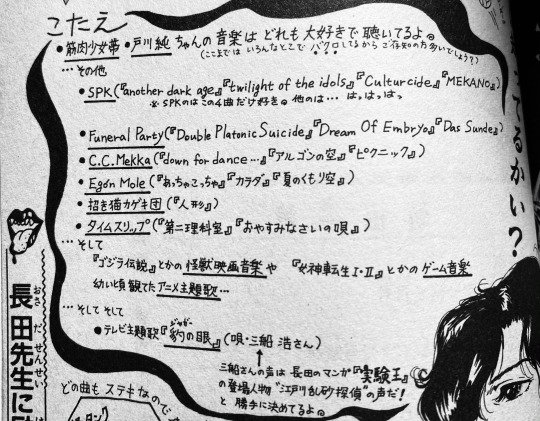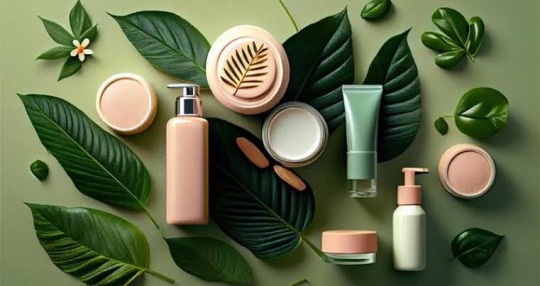#Medical Plastics Market share
Explore tagged Tumblr posts
Text
Medical Plastics Market Leading Players, Survey, Status and Trends Report by 2030
The global medical plastics market was valued at approximately USD 52.9 billion in 2023 and is forecasted to expand at a compound annual growth rate (CAGR) of 7.4% from 2024 to 2030. This growth is largely attributed to advancements in specialized plastics and plastic composites, which are integral in manufacturing various medical components such as catheters, surgical instrument handles, and syringes. The rising demand for in-house and advanced medical devices is propelling the need for durable, lightweight materials like polyethylene, polypropylene, and polycarbonate, which are increasingly used in medical device manufacturing. Furthermore, the expanding home healthcare sector, which is more cost-effective than hospital-based care, has also significantly increased the demand for medical devices that rely on medical plastics for portability, durability, and safety.
According to the most recent U.S. census data, approximately 16.8% of the U.S. population is aged 65 or older, with this demographic expected to reach 74 million by 2030. Among this population, those aged over 85 require the most intensive healthcare, and their numbers are growing rapidly. In March 2021, President Joe Biden proposed a significant investment of USD 400 billion over eight years for Medicaid, aimed at expanding at-home care for the elderly and disabled populations while raising caregivers' wages. In the U.S., increasing costs and shrinking profit margins for healthcare providers have driven the government to overhaul healthcare funding and insurance through initiatives like the Affordable Care Act (ACA) and Medicaid reforms to make healthcare more accessible and affordable.
Gather more insights about the market drivers, restrains and growth of the Medical Plastics Market
The market is experiencing a high growth stage, with an accelerated pace due to its consolidation. Medical plastic manufacturers are increasingly pursuing strategic moves such as mergers and acquisitions, product launches, and production expansions to strengthen their competitive positioning. For example, in November 2023, TekniPlex Healthcare acquired Seisa Medical, a medical device manufacturer based in El Paso, Texas. This acquisition allows TekniPlex to leverage Seisa’s expertise in materials science and processing technology for interventional therapy and minimally invasive devices on a global scale. Seisa offers contract manufacturing services across the entire product development cycle for Class II and III medical devices, including component manufacturing, assembly, and packaging, all of which are critical for expanding TekniPlex’s global capabilities.
Application Segmentation Insights:
In 2023, the medical components segment led the market, accounting for over 40.0% of revenue share. The COVID-19 pandemic significantly drove demand for essential medical components such as personal protective equipment (PPE), face masks, gloves, gowns, and technology-intensive devices like magnetic resonance imaging (MRI) scanners. Emerging markets played a key role in manufacturing PPE, face masks, and gloves, while developed markets primarily focused on producing high-tech equipment such as MRI scanners and ventilators. The global surge in demand for these products during the pandemic highlights the importance of medical plastics in facilitating healthcare responses, thereby fueling growth in the medical components segment.
Medical device packaging is essential for maintaining device integrity and performance over its shelf life. Proper packaging protects devices from physical damage, biological contamination, and environmental disturbances, while ensuring sterility before their use in healthcare settings. Effective packaging includes labeling for easy identification and supports the safe transport of devices to end users.
Packaging for orthopedic implants, such as knee, hip, spine, and thumb implants, requires materials compatible with multiple sterilization methods and that offer high puncture and abrasion resistance. These implants must be safeguarded against physical damage and contamination to maintain their integrity and effectiveness. Common materials used for orthopedic implant packaging include thermoplastic polyurethane (TPU) and polyethylene. UFP MedTech, for instance, developed FlexShield TPU and cross-linked polyethylene (XLPE) for orthopedic packaging applications. Both materials are compatible with gamma and ethylene oxide (ETO) sterilization processes and offer strong resistance to abrasion and punctures.
The demand for orthopedic soft goods, such as knee and back supports, is rising, particularly in developed regions like Europe, the U.S., and Japan, which have a growing elderly population. Additionally, the fitness and sports industries in emerging economies like India are driving demand as well. Orthopedic soft goods cater to a diverse consumer base, including senior citizens, young adults, and teens, by providing relief from joint pain caused by disease, occupational strain, or sports-related injuries. These products encompass a range of items, including rehabilitation aids, knee braces, wrist supports, back support braces, ankle supports, elbow straps, abdominal binders, rib belts, hernia supports, and cervical collars. They are essential for managing pain and providing support for injuries related to fractures, muscle pain, and various orthopedic conditions.
Order a free sample PDF of the Medical Plastics Market Intelligence Study, published by Grand View Research.
#Medical Plastics Market Share#Medical Plastics Market Analysis#Medical Plastics Market Trends#Medical Plastics Market Growth
0 notes
Text
Medical Plastics Market 2030 – Trends, Driving Factors by Manufacturers
The global medical plastics market was valued at approximately USD 52.9 billion in 2023 and is forecasted to expand at a compound annual growth rate (CAGR) of 7.4% from 2024 to 2030. This growth is largely attributed to advancements in specialized plastics and plastic composites, which are integral in manufacturing various medical components such as catheters, surgical instrument handles, and syringes. The rising demand for in-house and advanced medical devices is propelling the need for durable, lightweight materials like polyethylene, polypropylene, and polycarbonate, which are increasingly used in medical device manufacturing. Furthermore, the expanding home healthcare sector, which is more cost-effective than hospital-based care, has also significantly increased the demand for medical devices that rely on medical plastics for portability, durability, and safety.
According to the most recent U.S. census data, approximately 16.8% of the U.S. population is aged 65 or older, with this demographic expected to reach 74 million by 2030. Among this population, those aged over 85 require the most intensive healthcare, and their numbers are growing rapidly. In March 2021, President Joe Biden proposed a significant investment of USD 400 billion over eight years for Medicaid, aimed at expanding at-home care for the elderly and disabled populations while raising caregivers' wages. In the U.S., increasing costs and shrinking profit margins for healthcare providers have driven the government to overhaul healthcare funding and insurance through initiatives like the Affordable Care Act (ACA) and Medicaid reforms to make healthcare more accessible and affordable.
Gather more insights about the market drivers, restrains and growth of the Medical Plastics Market
The market is experiencing a high growth stage, with an accelerated pace due to its consolidation. Medical plastic manufacturers are increasingly pursuing strategic moves such as mergers and acquisitions, product launches, and production expansions to strengthen their competitive positioning. For example, in November 2023, TekniPlex Healthcare acquired Seisa Medical, a medical device manufacturer based in El Paso, Texas. This acquisition allows TekniPlex to leverage Seisa’s expertise in materials science and processing technology for interventional therapy and minimally invasive devices on a global scale. Seisa offers contract manufacturing services across the entire product development cycle for Class II and III medical devices, including component manufacturing, assembly, and packaging, all of which are critical for expanding TekniPlex’s global capabilities.
Application Segmentation Insights:
In 2023, the medical components segment led the market, accounting for over 40.0% of revenue share. The COVID-19 pandemic significantly drove demand for essential medical components such as personal protective equipment (PPE), face masks, gloves, gowns, and technology-intensive devices like magnetic resonance imaging (MRI) scanners. Emerging markets played a key role in manufacturing PPE, face masks, and gloves, while developed markets primarily focused on producing high-tech equipment such as MRI scanners and ventilators. The global surge in demand for these products during the pandemic highlights the importance of medical plastics in facilitating healthcare responses, thereby fueling growth in the medical components segment.
Medical device packaging is essential for maintaining device integrity and performance over its shelf life. Proper packaging protects devices from physical damage, biological contamination, and environmental disturbances, while ensuring sterility before their use in healthcare settings. Effective packaging includes labeling for easy identification and supports the safe transport of devices to end users.
Packaging for orthopedic implants, such as knee, hip, spine, and thumb implants, requires materials compatible with multiple sterilization methods and that offer high puncture and abrasion resistance. These implants must be safeguarded against physical damage and contamination to maintain their integrity and effectiveness. Common materials used for orthopedic implant packaging include thermoplastic polyurethane (TPU) and polyethylene. UFP MedTech, for instance, developed FlexShield TPU and cross-linked polyethylene (XLPE) for orthopedic packaging applications. Both materials are compatible with gamma and ethylene oxide (ETO) sterilization processes and offer strong resistance to abrasion and punctures.
The demand for orthopedic soft goods, such as knee and back supports, is rising, particularly in developed regions like Europe, the U.S., and Japan, which have a growing elderly population. Additionally, the fitness and sports industries in emerging economies like India are driving demand as well. Orthopedic soft goods cater to a diverse consumer base, including senior citizens, young adults, and teens, by providing relief from joint pain caused by disease, occupational strain, or sports-related injuries. These products encompass a range of items, including rehabilitation aids, knee braces, wrist supports, back support braces, ankle supports, elbow straps, abdominal binders, rib belts, hernia supports, and cervical collars. They are essential for managing pain and providing support for injuries related to fractures, muscle pain, and various orthopedic conditions.
Order a free sample PDF of the Medical Plastics Market Intelligence Study, published by Grand View Research.
#Medical Plastics Market Share#Medical Plastics Market Analysis#Medical Plastics Market Trends#Medical Plastics Market Growth
0 notes
Text
Medical Plastics Market Key Companies and Emerging Trends 2024 - 2030
The global medical plastics market size was estimated at USD 52.9 billion in 2023 and is expected to grow at a compound annual growth rate (CAGR) of 7.4% from 2024 to 2030.
This growth can be attributed to the development of advanced plastics and plastic composites used in medical components such as catheters, surgical instrument handles, and syringes. The demand for medical device packaging is likely to be driven by a rise in demand for in-house and advanced medical devices. Plastics including polyethylene, polypropylene, and polycarbonate are increasingly being utilized for the manufacturing of medical devices. The growth of home healthcare due to its low costs compared to hospital care and intensive care has resulted in a rise in demand for medical devices.
According to the latest U.S. census, 16.8% of the U.S. population is over the age of 65 years and this number is anticipated to reach 74 million by 2030. People aged over 85 need the most care and their population is growing rapidly. In March 2021, the U.S. President, Joe Biden, proposed spending USD 400 billion on Medicaid over eight years to fund at-home care for elderly and disabled people as well as increase the wages of caregivers.
Gather more insights about the market drivers, restrains and growth of the Medical Plastics Market
Detailed Segmentation:
Market Concentration & Characteristics
Market growth stage is high, and pace of market growth is accelerating owing to overly consolidated market. Medical plastic manufacturers are actively implementing challenging strategic initiatives such as mergers & acquisitions, new product launches, production expansion, among others.
For instance, In November 2023, TekniPlex Healthcare announced the acquisition of Seisa Medical, a medical device manufacturer based in El Paso, Texas, offering various services throughout the product development cycle. This acquisition will enhance the company's materials science and process technologies worldwide for interventional therapy devices and minimally invasive. From development and design to component manufacturing, final assembly, and packaging, Seisa provides global contract manufacturing services for Class II and III medical devices and specialty components.
Process Technology Insights
Injection molding is a widely used process in the medical plastics industry. It has many advantages, including compliance with medical industry standards and regulations. The use of engineering-grade plastics ensures that parts are created to enhance patient safety and comply with FDA (Food and Drug Administration) guidelines. Injection molding is highly flexible, allowing parts to be fully customizable to fit the consumer.
Application Insights
The medical components segment dominated with a revenue share above 40.0% in 2023. The COVID-19 pandemic increased the demand for medical components such as personal protective equipment (PPE), face masks, gloves & gowns, and magnetic resonance imaging (MRI) scanners. The emerging countries manufactured PPE, face masks, and gloves, whereas, developed countries manufactured technology-intensive equipment such as MRI scanners and mechanical ventilators. Hence, the demand for the aforementioned equipment was rising during the pandemic, which in turn is expected to drive the segment’s growth.
Regional Insights
In 2023, North America dominated global medical plastics market with a market share of above 33.0%. This is expected to augment the demand for generic drugs as well as medical devices in the coming years, thereby driving North America medical plastics market over the forecast period. The key applications catered to by this industry include pharmaceutical packaging and medical components manufacturing.
Rising demand for medical plastics in pharmaceutical packaging applications and the rapid growth of the pharmaceutical industry in Mexico and Canada are expected to drive the medical plastics market in the region. For instance, the elimination of stringent regulations by the Mexican government, which had earlier restricted the establishment of new manufacturing units, has resulted in the establishment of new pharmaceutical manufacturing facilities for major companies such as Takeda and Astellas in Mexico.
Product Insights
The Poyphenylsulfone (PPSU) resin segment dominated the medical plastics market with a revenue share of above 51.0% in 2023. The heat and chemical resistance of PPSU can be attributed to this dominance. These plastics possess high strength and durability, making essential surgical tools. These are preferred in surgical robots and biopharmaceutical processing. Polyphenylsulfone exhibits good heat and chemical resistance, making it ideal for metal replacement in medical applications. These plastics possess high flexural strength, impact resistance, and durability and are ideal for producing single- and multi-use surgical instruments. Its high-temperature resistance makes it suitable for multi-use medical devices that are repeatedly steam-sterilized.
Browse through Grand View Research's Plastics, Polymers & Resins Industry Research Reports.
• The global polybutadiene market size was valued at USD 1.88 billion in 2023 and is projected to grow at a compound annual growth rate (CAGR) of 4.9% from 2024 to 2030.
• The global polycarbonate sheet market size was valued at USD 4.64 billion in 2023 and is projected to grow at a compound annual growth rate (CAGR) of 5.7% from 2024 to 2030.
Key Companies & Market Share Insights
Some key market players include BASF SE; Celanese Corporation; Evonik Industries AG; SABIC; Dow, Inc.; Solvay S.A.; Trinseo S.A.; and Eastman Chemical Company.
• In November 2022, Celanese Corporation announced the acquisition of DuPont's Mobility & Material (M&M) business for USD 11 billion. This strategic move enables Celanese to expand its global reach and enhance its offerings in the environmental sector, particularly in sustainable transportation.
Key Medical Plastics Companies:
The following are the leading companies in the medical plastics market. These companies collectively hold the largest market share and dictate industry trends. Financials, strategy maps & products of these medical plastics companies are analyzed to map the supply network.
• Röchling SE & Co. KG
• Nolato AB
• Saint-Gobain
• SABIC
• Orthoplastics Ltd
• Eastman Chemical Company
• Celanese Corporation
• Dow, Inc.
• Tekni-Plex, Inc.
• Solvay S.A.
• HMC Polymers Company Limited
• ARAN BIOMEDICAL TEORANTA
• Trelleborg Group
• Avantor, Inc.
• Trinseo
• Evonik Industries AG
Medical Plastic Market Segmentation
Grand View Research has segmented the global medical plastic market based on product, application, and region:
Medical Plastics Product Outlook (Volume, Kilotons & Revenue, USD Million, 2018 - 2030)
• Polyethylene (PE)
• Polypropylene (PP)
• Polycarbonate (PC)
• Liquid Crystal Polymer (LCP)
• Polyphenylsulfone (PPSU)
• Polyethersulfone (PES)
• Polyethylenimine (PEI)
• Polymethyl Methacrylate (PMMA)
• Others
Medical Plastics Process Technology Outlook (Volume, Kilotons; Revenue, USD Million, 2018 - 2030)
• Extrusion
• Injection Molding
• Blow Molding
• Other
Medical Plastics Application Outlook (Volume, Kilotons & Revenue, USD Million, 2018 - 2030)
• Medical Device Packaging
• Medical Components
• Orthopedic Implant Packaging
• Orthopedic Soft Goods
• Wound Care
• Cleanroom Supplies
• BioPharm Devices
• Mobility Aids
• Sterilization and Infection Prevention
• Tooth Implants
• Denture Base Material
• Other Implants
• Others
Medical Plastics Region Outlook (Volume, Kilotons & Revenue, USD Million, 2018 - 2030)
• North America
o U.S.
o Canada
o Mexico
• Europe
o Germany
o U.K.
o France
o Italy
o Netherland
• Asia Pacific
o China
o India
o Japan
• Central & South America
o Brazil
o Argentina
• Middle East & Africa
o Saudi Arabia
o UAE
Order a free sample PDF of the Medical Plastics Market Intelligence Study, published by Grand View Research.
Recent Developments
Some key players operating in market include BASF SE; Celanese Corporation; Evonik Industries AG; SABIC; Dow, Inc.; Solvay S.A.; Trinseo S.A.; Eastman Chemical Company among others.
• In February 2023, Cleanse Corporation announced the acquisition of DUPONT's mobility and mobility business for USD 11.00 billion. This strategic move enables Cleanse to expand its global reach and enhance its offerings in the environmental sector, particularly in sustainable transportation.
• In June 2023, SABIC acquired Clariant's 50% stake in Scientific Design, a renowned catalysis leader. This acquisition bolstered the non-cyclical, technology-driven business and brought it closer to becoming a leading global specialist.
#Medical Plastics Market#Medical Plastics Market size#Medical Plastics Market share#Medical Plastics Market analysis#Medical Plastics Industry
0 notes
Text
#Medical Plastics Market#Medical Plastics Market size#Medical Plastics Market share#Medical Plastics Market trends#Medical Plastics Market analysis#Medical Plastics Market forecast#Medical Plastics Market outlook
0 notes
Text
Medical Plastics Market to Hit $86.4 Billion by 2032
The global Medical Plastics Market was valued at USD 50.8 Billion in 2024 and it is estimated to garner USD 86.4 Billion by 2032 with a registered CAGR of 7.9% during the forecast period 2024 to 2032.
The report throws light on the competitive scenario of the global Medical Plastics Market to know the competition at global levels. Market experts also provided the outline of each leading player of the global Medical Plastics Market for the market, considering the key aspects such as the areas of operation, production, and product portfolio. In addition, the companies in the report are studied based on vital factors such as company size, market share, market growth, revenue, production volume, and profit.
The global Medical Plastics Market is fragmented with various key players. Some of the key players identified across the value chain of the global Medical Plastics Market include SABIC (Saudi Arabia), BASF (Germany), Celanese (US), Evonik (Germany), Solvay (Belgium), Covestro (Germany) and others. etc. Considering the increasing demand from global markets various new entries are expected in the Medical Plastics Market at regional as well as global levels.
Download Medical Plastics Market Sample Report PDF: https://www.vantagemarketresearch.com/medical-plastics-market-1665/request-sample
Top Competitors:
SABIC (Saudi Arabia), BASF (Germany), Celanese (US), Evonik (Germany), Solvay (Belgium), Covestro (Germany) and others.
Understanding the Industry's Growth, has released an Updated report on the Medical Plastics Market. The report is mixed with crucial market insights that will support the clients to make the right business decisions. This research will help new players in the global Medical Plastics Market to sort out and study market needs, market size, and competition. The report provides information on the supply and market situation, the competitive situation and the challenges to the market growth, the market opportunities, and the threats faced by the major players.
Regional Analysis
-North America [United States, Canada, Mexico]
-South America [Brazil, Argentina, Columbia, Chile, Peru]
-Europe [Germany, UK, France, Italy, Russia, Spain, Netherlands, Turkey, Switzerland]
-Middle East & Africa [GCC, North Africa, South Africa]
-Asia-Pacific [China, Southeast Asia, India, Japan, Korea, Western Asia]
You Can Buy This Report From Here: https://www.vantagemarketresearch.com/buy-now/medical-plastics-market-1665/0
Full Analysis Of The Medical Plastics Market:
Key findings and recommendations point to vital progressive industry trends in the global Medical Plastics Market, empowering players to improve effective long-term policies.
The report makes a full analysis of the factors driving the development of the market.
Analyzing the market opportunities for stakeholders by categorizing the high-growth divisions of the market.
Questions answered in the report
-Who are the top five players in the global Medical Plastics Market?
-How will the global Medical Plastics Market change in the next five years?
-Which product and application will take the lion's share of the global Medical Plastics Market?
-What are the drivers and restraints of the global Medical Plastics Market?
-Which regional market will show the highest growth?
-What will be the CAGR and size of the global Medical Plastics Market during the forecast period?
Read Full Research Report with [TOC] @ https://www.vantagemarketresearch.com/industry-report/medical-plastics-market-1665
Reasons to Purchase this Medical Plastics Market Report:
-Analysis of the market outlook on current trends and SWOT analysis.
-The geographic and country level is designed to integrate the supply and demand organizations that drive industry growth.
-Medical Plastics Industry dynamics along with market growth opportunities in the coming years.
-Medical Plastics Market value (million USD) and volume (million units) data for each segment and sub-segment.
1 year consulting for analysts along with development data support in Excel. Competitive landscape including market share of major players along with various projects and strategies adopted by players in the last five years.
Market segmentation analysis including qualitative and quantitative analysis including the impact on financial and non-economic aspects.
Complete company profiles that include performance presentations, key financial overviews, current developments, SWOT analyzes and strategies used by major Medical Plastics Market players.
Check Out More Reports
Global Lactic Acid Market: Report Forecast by 2032
Global Portable Battery Pack Market: Report Forecast by 2032
Global Marché du propane: Report Forecast by 2032
Global Dropshipping Market: Report Forecast by 2032
Global Aerospace and Defense Telemetry Market: Report Forecast by 2032
#Medical Plastics Market#Medical Plastics Market 2024#Global Medical Plastics Market#Medical Plastics Market outlook#Medical Plastics Market Trend#Medical Plastics Market Size & Share#Medical Plastics Market Forecast#Medical Plastics Market Demand#Medical Plastics Market sales & price
0 notes
Text
How Does Research and Development Boost Medical Injection-Molded Plastics Industry?
The medical injection-molded plastics industry has garnered $23,014.7 million revenue in 2021, and it is projected to rise at a rate of 5.7% from 2021 to 2030, to generate $37,899.5 million in 2030. It is ascribed to the rising consumption of plastic in various healthcare applications, including medical devices, mobility aids, and implant packaging.

Moreover, the surging research & development expenditure, and technological advancements in the healthcare sector propels the requirement for medical-grade injection-molded polymers.
Medical components capture the substantial industry revenue, of approx. 25% and it is further projected to follow the same trend from 2021 to 2030. It is attributed to the massive usage of high-grade plastics for medical equipment manufacturing, including catheters, syringes, containers, and medical bags.
Furthermore, the rising requirement for light and durable medical products, easy to sterilize is projected to propel the industry.
Additionally, the implants generate significant industry revenue, and their sales are projected to rise at a faster rate in the near future. It is ascribed to the rising elderly population, and the growing prevalence of dental implants, orthopedic disorders, endovascular disorders, and cardiovascular diseases.
In addition, the technological advancements in medical implants, led by extensive R&D to provide better results of medical procedures, cause industry propulsion.
Furthermore, mobility aids have experienced the highest CAGR, and it is projected to rise at the fastest rate in the future. It is ascribed to the worldwide rising elderly population, various technological advancements, and increasing healthcare expenses in developing countries.
Moreover, the rising usage of mobility aids, such as drinking aids, wheelchairs, and bath chairs, propels the market expansion.
Injection-molded plastics play a greater role in the transformation of the healthcare sector. These materials are used in the manufacturing of blood sample analysis cuvettes, pregnancy test devices, needle housing, and other medical components. It ensures their lightweight, easy sterilization, and higher affordability.
In addition, these polymers can be utilized in the production of disposable plastic syringes, and blood bags, by molding them. These plastics are used to create antibacterial contact interfaces that can kill bacteria and other pathogens, and reduce infection spread.
Moreover, these plastics can be customized to cater to the requirements of specific applications. They hold the potential to adapt to the smallest and most-delicate molds. Plastics are massively used in the production of surgical equipment, and products, including contemporary pacemakers, stents, catheters, and joint replacement systems.
North America holds the largest industry revenue, of over 40%, and it is projected to follow the same trend in the near future. It is ascribed to growing per capita income, surging healthcare costs, and a rising elderly population.
The U.S. captures a substantial share of the region-based industry, ascribed to highly advanced technology, growing demand for implantable devices, rising health awareness, healthcare policies, and government support.
APAC is projected to experience the fastest growth in the coming future, rising at a rate of over 6%. It is led by the growing application of injection-molded plastics in medical implants, components, and mobility aids.
In addition, the increasing consumer awareness of affordable medical products developed by molded products, rising concern on research and development of medical devices, and growing adoption of cutting-edge technologies in healthcare is projected to propel the industry growth.
Therefore, the medical injection molded plastics industry is projected to rise due to the increasing elderly population.
Source: P&S Intelligence
#Medical Injection Molded Plastics Market Share#Medical Injection Molded Plastics Market Size#Medical Injection Molded Plastics Market Growth#Medical Injection Molded Plastics Market Applications#Medical Injection Molded Plastics Market Trends
1 note
·
View note
Text
https://cynochat.com/read-blog/185825_plastic-injection-molding-for-medical-device-market-size-analysis-and-forecast-2.html
#Plastic Injection Molding for Medical Device Market Share#Plastic Injection Molding for Medical Device Market Size
0 notes
Text
Another Strange Earth Drink
I can finally say I’ve tasted the “worm jerky” that the one Heatseeker ship was named after. It wasn’t as bad as I expected. Extra chewy, and this kind had a sharp flavor that changed wildly between bites — because that’s the variety that Paint liked the most.
She said, “It’s best if you hold it between your teeth and run your tongue along it to get all the flavors. It’s a full fan of sharpness values!” Her lizardy face was excited as she demonstrated, looking like a kid playing with gummy candy. If that kid was also an orange-scaled lizard alien.
I didn’t bother trying to make sense of the phrasing. “Full fan” was probably something like “rainbow.” I just cleaned my mouth with a handful of cheesy crackers that I wasn’t going to subject everyone else to, and waited for my turn.
(We had a day to burn while waiting for our next delivery client to meet us, and a visit to the space station’s market had ended with half the crew picking items of their own species’ origins to share with the rest. Eggskin the medic was on hand just in case.)
Oh boy, it was my turn next.
“What omnivore nonsense have you come up with?” Mur asked, folding his blue-black tentacles sternly. “It had better not involve that infant-food liquid.”
“Nope, no dairy products,” I said, picking up the heavy box under my chair.
Eggskin tapped a claw against their tablet full of biological info. “I’ve ruled out anything likely to cause digestive distress, and that definitely counts.”
“Yes, no pizza today, more’s the pity.” I set the box on the table. “This should actually be fun. Marble soda!” I opened the top and began passing them out.
“Marble what?” asked Blip, frills waving curiously.
“Is this a drink?” Zhee wanted to know. He angled his antennae into a look of suspicion. Trrili held a similar expression across the table.
“It’s a fun drink!” I said. “There’s a special trick to opening it. The soda itself isn’t that special — the most popular brand is named after a mispronunciation of a common flavor in another language, though they make a bunch of other flavors too — anyways, it’s a bubbly drink with a fruit flavor. This one’s strawberry. And Eggskin says it’s safe enough to try.”
Eggskin nodded their scaly head. “I wouldn’t recommend large quantities, but yes. The bubbles are carbon dioxide and the fruit is in trace amounts.”
“I like fruit,” Paint said bravely, clutching the bottle. “How do we open it?”
“Right. Everybody watch me. First you peel off the plastic wrap.” I demonstrated, exposing the plastic contraption that had something of a learning curve even among my own people. “Now this bit is in two parts. You have to pop the center piece out, ‘cuz that’s the part you actually need, and this part you set aside. It just keeps the bottle from opening early.” I separated the two and held them up.
Everyone was watching carefully. Good.
I continued. “I can help with that if you need. Once you have this part, though, you just place it against the top, give it some pressure, and it pops the marble down into the bottle.” With a flourish, I leaned a palm onto the little plastic doohickey until the marble separated with a satisfying pop.
Paint made a quiet “Ooh” noise while Blop flapped his frills in surprise.
“Now you have to make sure the marble doesn’t just roll back to block the opening when you drink it,” I said. “These dents will catch it; you just have to hold it at the right angle. Like this.” I took a sip, and the marble stayed where it was supposed to.
When I put it down, the air was full of the crinkling of plastic as my alien coworkers got to work on the wrapping. Some had an easier time than others.
“Oh, you’re supposed to rip it along the tiny holes,” Paint said, having already sliced it off with a claw. “I didn’t see that.”
“This is not meant for tentacles,” Mur griped. He tried twisting it, but no luck.
“Here, let me.” I put out a hand, ready to remove the wrap quickly and help the others. Blip and Blop should be fine, but the Mesmers with their praying-mantis pincher arms might find this awkward. They had those tiny little wrist fingers, but—
Identical pops sounded from opposite sides of the table.
I turned to find Zhee and Trrili each holding a bottle with one pincher. They’d used the other to stab through the top, not bothering to remove the plastic wrap first.
“Well, that’s one way to do it,” I said.
Zhee said, “Seemed faster.” He peeled off the wrapping now with one deft pincher-tip while Trrili simply wrenched hers away.
A thunk sounded as Blip misjudged the angle and tipped her bottle over instead of opening it. Next to her, Blop was having trouble finding a finger small enough to separate the plastic bits. I hurried to unwrap Mur’s drink and help.
Paint had a little difficulty getting enough leverage to press down on the top, but Eggskin figured it out and gave her a hand, standing on the seat and using their bodyweight. One way or another, everybody got their bottles open.
They tried it! And everybody hated it.
“If the bubbles are regular air, why do they taste so bad?” Blip wanted to know.
“I think it’s the fruit flavor that’s tangy,” Blop said.
Zhee hissed quietly. “You mean fruit’s not supposed to taste rancid?”
“It’s a drink that fights back, and I can respect that,” Trrili declared. “But this is not a battle I’m interested in fighting.”
Mur took a sip and shuddered, sending rippling tentacles in all directions. “Ugh. It tastes like static shock and the wrong part of a plant.”
“That’s a pity,” I said. “It’s pretty good as far as I’m concerned.”
Unexpectedly, Paint said, “I like it! It kind of bites you at first, but then it reminds me of an overripe galaxy fruit. And the bottle is interesting.”
“Glad to hear it!” I said.
So everybody hated it except for Paint. And Eggskin probably, who didn’t make any loud declarations, but they did drink the whole thing. I call that a win.
“Well, that was a fascinating disaster!” Zhee said, shoving his bottle towards the middle of the table. “On to my turn.”
Mur grumbled something that sounded like “Oh great.” He’d already dumped his soda down the sink and kept the bottle as a fidget toy, sticking a thin tentacle in and batting the marble around.
I sipped my own and waited to see what Zhee would bring out. I considered myself lucky to be on the omnivorous side of things — theoretically anything he came up with should be fine.
But of course, theory only goes so far.
“Everyone here is okayed for animal-based nutrition,” Zhee said, setting down an opaque bag. “So everyone ought to enjoy this one. Except for Trrili, who has no taste.”
Trrili did the Mesmer equivalent of sticking her tongue out at him, which involved a disturbing configuration of mandibles.
Zhee opened the bag and began removing little sealed tubs. “I give you: fursqueak brains, with the best vitamin sauce!”
I sank down in my seat, still holding the bottle and not eager to grab a sample of brains. Even when Eggskin clarified that the sauce was Vitamin C, and ought to taste like citrus, it didn’t sound particularly appealing.
Zhee was proud of it, though. Apparently this was the best food in the universe, favored by all the best chefs (of his species, anyway), and there was nothing anyone could say to ruin his enjoyment of it, even if everyone else present was as uncultured as Trrili.
It occurred to me that I could probably ruin his meal by telling him about his ressemblance to the fried crickets that were easy to find back home, but I decided against it.
I just drank my marble soda and enjoyed watching Trrili argue with him instead.
~~~
These are the ongoing backstory adventures of the main character from this book.
Shared early on Patreon! There’s even a free tier to get them on the same day as the rest of the world.
The sequel novel is in progress (and will include characters from these stories. I hadn’t thought all of them up when I wrote the first book, but they’re too much fun to leave out of the second).
#more fun and games with aliens versus Earth food#always a good time#I saw this idea as a writing prompt for mundane human-type characters#and guess what: it's fun in space too#my writing#The Token Human#humans are weird#haso#hfy#eiad#humans are space orcs#science fiction#writeblr#writblr
42 notes
·
View notes
Note
‼️Save Hilda's Pregnancy‼️
💥🚨 Pregnancy in War🚨💥
🇵🇸🍉🇵🇸🍉🇵🇸🍉🇵🇸🍉
🔥💥Am pregnant 🔥💥
Please read our story carefully and imagine the situation we are living in. 400 days of war and genocide. 😥
There is nothing in the markets, and if anything is found, it is extremely expensive. 😭
The weather is very cold, and the leaky tents are worn out from the summer heat. 🔥
The children cry from the intense cold and the darkness of the night 💥.
There is no electricity, the water is contaminated, no education, no healthcare, and no medicine. 😓
Pregnancy has exhausted me, and I wonder how my child will survive in these conditions if they arrive. There are not even vaccinations or clothes for children. 😥
Some of my relatives are covering their children with pieces of plastic to protect them from the cold due to the lack of any income sources. 😰
In addition, the sounds of bombing, gunfire, and drones mimic the sounds of wild animals and screaming to frighten people in their sleep. We don't know how long this suffering will last or if we will truly be able to endure it. 😔 🇵🇸🍉🇵🇸🍉
We want to reach our goal, we're still in the beginning 🙏🙏
Plz visit the pinned post on my page to donate or reblog ♻️
https://gofund.me/b845968e
✅verified by @gaza-evacuation-funds
✅bilal-salah0
✅khanger
✅ana-bananya
✅dlxxv-vetted-donations
✅a-shade-of-blue
Hey, Tumblr. This is Hilda, who I care about so so so much. So much that I'm willing to be brave and vulnerable and share my own story under the cut. I ask that you make a donation to either of the below links if you can; Gofundme minimum €5, Ko-Fi minimum $1 AUD. Link to her Gofundme | Link to our Ko-Fi (Ko-Fi proceeds are split between the 20 families I'm supporting, but you can ask that your donation goes to Hilda directly) TW: loss
I was around Hilda's age when I got pregnant, too. I wasn't expecting it. I wasn't ready. My life was just beginning, and I had no money, and I had just escaped from a household that wasn't being very kind to me. I was NOT ready to be a parent. I was extremely distressed. My partner and I talked about it. We decided that, although it broke our hearts... it wouldn't be fair to bring up a child in the circumstances we were living in. We promised that one day we would try again, when things were better, when we'd both grown up a bit. So I booked an appointment, shamefully borrowed $1,000 from a friend, had a surgery... and I wasn't pregnant any more. And that was 9 years ago. I am still sad about it, because I think about what my child would look like, what their favourite animal would be, what their favourite food would have been. I will never know.
In those 9 years, I've been living my life. I'm 30 now, and I have only just started to feel like I understand myself, and what's important in life, and how to participate in the world. I am strong, I am brave, I am good.
But it's not the end of my story. I still get to look forward to meeting my child. I feel capable of raising a kind, gentle, creative child that becomes a passionate, strong, thoughtful adult. The thing is, although they were still overwhelming for me, my circumstances then were so much better than Hilda's are now. I had food, I had a safe place to live, our hospitals are free and operational. I WISH Hilda had that privilege right now. How will she cope, if she's already struggling to find food, taking vitamins in place of meals because she has no other choice? If her tent is already flooding, her bedding soaking wet and freezing cold? Will she have a safe birth with medical care, or will she be alone and afraid and in pain? Maybe Hilda would make the same decision I made, if she had the choice. I think she's very brave. I know she's very lovely. I have no doubt that if her child makes it into this world, she'll do an excellent job with the limited resources that she's got. I would be overjoyed to know that her soul carries on in the spirit of the next generation. I would hope so dearly that her child might grow up in a safe environment, that the war will end soon, that this crisis is something that her child is taught ABOUT, rather than having to live through and experience firsthand. I hope so. I really hope so. What I do know is that we are Hilda's best hope to survive this monumental life change, as safely and comfortably as possible. Whatever happens, I want her to know that she is loved and supported. That she matters, and so does her unborn child, whether they make it into this world or not. That they are worth fighting for. Give a little, or give a lot.
#palestine#free palestine#gaza#free gaza#ask received#go fund her#go fund gaza#pregnancy#human rights#vetted#words of support#sending love
63 notes
·
View notes
Text

MOON AGE 15 : DAMNATION (English Translation) Moon Age 15: Damnation is a 1988 short comic by pseudonymous author Not Osada, who openly drew influence from the Tokyo Grand Guignol's work in such a way that can arguably give a loose insight to the TGG's mysteriously anomalous works. While only a slight window into what could've existed in Ameya's vision, each contemporary rendering of his world of gore-soaked medical equipment and rusted metal is valuable in what it represents. As mentioned in my prior Litchi essay, the fragments of the Tokyo Grand Guignol we have now are descendants of a cultural phantom, standing as shrouded windows to a strange intangible stage that's positioned somewhere between post-Maruo inferno, industrial subculture and decadent poetry. While Osada’s manga featured notably grizzly and cruelly morbid scenarios, his stories were made explicitly for the shoujo market with a distinctly shoujo-influenced art style. Characters appear almost doll-like with their visual perfections, all while they’re often dismantled and reassembled in bizarre surgical practices by sadistic doctors. Much like how Zera expresses horror to seeing his own imperfect organs in contrast with his youthful appearance, our pristine victims share the same internals as any other slaughtered cadaver, all in a maddening spiral of narratives that contemporary readers often described as resembling descents to insanity. This fixation of the contrast between perceived beauty and grotesqueness is arguably traced back to the Tokyo Grand Guignol’s own works, with lines accentuating the youthful features of certain characters while audience members were known to fondly look back on the actors’ appearances. Litchi himself was described as being a “cute” robot despite the violence it was programed to carry out. It’s possible that this collision is inherent to Ameya’s conceptual destruction of the TGG. A known detractor to poetic writing, he called on a romantic author to pen the screenplays to the TGG’s first three plays so he could “destroy” them in his direction. The use of beauty could arguably be a mockery of it, taking these idealized dolls and leaving them trapped in worlds of fascism and hospital rooms that are haunted by the stinging stench of antiseptics and blood. Plastic hospital drapes were used in place of stage curtains and autopsy films were shown to the wide-eyed characters, who spoke of pure blood and dirty blood, the antithesis of blood, mercuro. What is beauty a representation of in the Grand Guignol’s works with the prominent fascist leanings of the protagonists? Considering the perspectives of our characters where the Hikari Club and the deranged teachers and Nazi doctors are treated as protagonists rather than explicit antagonists, the plays could arguably be read as the decay of a self-convinced beauty under fascist rule. Songs of the pure-blooded ubermensch fading into silence as the singers all collapse, lost in their own delirium as they pump mercurochrome into their hearts and try to rationalize their own organs that resemble the internals of the so-called ‘landraces’ they rendered into lifeless meat. It’s the natural conclusion of fascism, a collapse that occurs in demented violence to the face of a denial of death. I was originally split on publicizing my translation due to copyright-related complications, but after seeing the increasing gatekeeping of TGG materials at the hands of a rapidly growing market riddled with competitive spending and scalping, I feel obliged to share it to the public who (like myself) can’t afford to spend the now literal hundreds that are required to access angura ephemera that was meant to be openly available to the public to begin with. When originally finding this story, the book it was featured in was only 5 dollars. Now it goes for 60 to 200. That's ridiculous. With all the preamble out of the way, the story is under the cut...























While I made my best effort to maintain accuracy to the source material in translation despite my practically nonexistent understanding of Japanese (my translation method is a Frankensteining of language learning videos, a Japanese to English dictionary from the Internet Archive and Google Translate with a lot of localizing and dissection in between), there are several details I feel I should note for the sake of transparency. One smaller one was the inclusion of the term l * lita. It was in the original text, and I was honestly very unsure of including it in my translation as it’s a term I’m personally icked out by. While I was ultimately recommended to keep the line as is for accuracy, I wish to state that it's a term I'm personally very uncomfortable with in what it represents. The other note, which is the more prominent one in the final product, are the references to The Last Attempt at Paradise. In the original text the club members solely refer to their hideout as paradise and Eden, leaving a lot of excess space in the speech bubbles after translation when making the shift from Japanese text to English. The Last Attempt at Paradise was the name of S.P.K.’s 1982 live album that documents their set at the Off the Wall Hall venue in Lawrence, Kansas. Often considered one of their best concerts and a highlight of the industrial genre, the S.P.K. Appreciation Society of Sydney in their All The Way With S.P.K. / American Tour article describes the concert as being the group's “best performance to date”, further adding that they “Flattened (an) enthusiastic audience with massive P.A. amplification of FX bass regeneration”. This insertion wasn’t done at random, as the Tokyo Grand Guignol’s works were heavily engrained in the original industrial scene of the 80s. Both the 1985 and 1986 performances of Litchi began on a playback of the S.P.K. song Culturcide (from their 1983 Dekompositiones EP), and it was likely that use of the track that led to Not Osada’s early fixation on S.P.K.’s music. At the end of Blind Beast, in a sort of reader Q&A Osada is questioned about some of his favorite music. At the top of the list he features the tracklist of the Dekompositiones EP and the track Mekano from their 1979 Mekano / Contact / Slogun single. Interestingly enough he states that he only likes those four songs from the band, following the text with laughter in regards to their remaining discography. I’m unsure if this means he was unimpressed with their noisier work (which would be curious knowing his liking of Mekano with how it originated from their earliest noise-adjacent album) or if he was directed to their later Machine Age Voodoo material and was alienated by it. In the same Q&A he also mentions the band Funeral Party, who featured specially commissioned art by Suehiro Maruo on their Dream of Embryo single. It's apparent that he also had a copy of the compilation album Vision Of The Emortion, as the list also includes C·C·Mekka and Ego'n Mole, who were both featured in the album alongside Funeral Party's only two other documented tracks, Das Sunde and Gears - Night. S.P.K. references are sprinkled throughout this story along with Osada's other Litchi-adjacent entries. Aside from one of Zera's henchmen being named after the Mekano track, it's very likely that the frequent references to Eden are in homage to the lyrics of Mekano. The first lines of the track include the verses "One by one, odd to even. Break the scenes, rudely eden...".

Moon Age 15 was originally printed in 1988 as a two-part miniseries in the horror magazine Complete Collection of Horror and Occult Works - HELP, namely in volumes 5 and 6. While being an early work that derived from the TGG, it still wasn’t the first comic to adapt the Litchi stage play, with Das Blut : Blood and Eternal Girl preceding it with their 1986 publication in Osada’s debut anthology Night Reading Room, sharing the same year as the TGG’s early closure following creative conflicts between Norimizu Ameya and K Tagane (the group's author, who remains anonymous to this day). It’s to be noted however that while Das Blut and Eternal Girl were the first stories to feature the Hikari Club as antagonists, they are only tangentially related with Moon Age showing more distinct Grand Guignol archetypes (musings of the full moon, examinations of the Hikari club’s misogyny, idealization of technology, and even an early rendition of the Litchi robot itself). First kept solely as a brief serial, Moon Age was later reprinted in abridged form as a short story in the 1996 Blind Beast anthology. While copies of HELP are notably hard to find and demand high prices, I was given an in depth view of both volumes that featured Moon Age’s serialization by a collector earlier last year. While the drawings are still the same on a rudimentary level, the length of the serialized version is notably longer than the later Blind Beast variant, with the HELP serialization being over 40 pages while Blind Beast’s is only 24. This was the product of the manga being entirely revised for Blind Beast’s print, with the layouts being drastically altered along with basic revisions of the line art. Certain scenes that would usually take 2 to 3 pages in the HELP version were condensed to 1, resulting in a unique tradeoff where one version feels unusually spacious in its framing while the other is heavily condensed and almost chaotic by comparison. It’s only a thing that springs on you once you compare the two variants, I saw the revised version first and originally didn’t pay any mind to it. One thing that is certain is the polishing of the art. The brush work in the Blind Beast version is refined with a more elaborate sense of weight and flow while the HELP version is notably rough with the prominent use of rudimentary screentones. It reflects as a somewhat rougher variant of the art shown in Night Reading Room. It feels strangely digital, like it’s the product of early computer art. The line-by-line reuse of the decapitation scene from Eternal Girl being shown on the TVs further adds to the strange digital feel of the art style.


Similar to Moon Age, Osada's other stories of the Hikari Club featured the members luring girls to their brutal deaths. In Eternal Girl the members bring in a student and film her mutilation for a snuff film that acts as the story's namesake, in Das Blut they corner another student to the woods where they hang her, and in Jinta Jinta they kidnap a student who bullied one of her classmates to suicide before trepanning her with a strange device that's somewhere between an electric chair and a drill. Not Osada was very recently namedropped in the concluding essay of an English print of Kawashima Norikazu’s Her Frankenstein under the alternate Nagata Nooto anglicization of Osada’s pseudonym. Their name is a curious case as while there is a prominent written variant (長田ノオト), it’s seen numerous English iterations. In Osada’s own English signatures it is written as Not Osada (with the name apparently being derived from a German phrase), but other variants include Osada Nohto, Osada Nooto and Not Nagata. If I'm not mistaken, it could count as one of the first English acknowledgements of Osada's works in print.
74 notes
·
View notes
Text
Acetic Acid Market - Forecast(2024 - 2030)
Acetic Acid Market Overview
Acetic Acid Market Size is forecast to reach $14978.6 Million by 2030, at a CAGR of 6.50% during forecast period 2024-2030. Acetic acid, also known as ethanoic acid, is a colorless organic liquid with a pungent odor. The functional group of acetic acid is methyl and it is the second simplest carboxylic acid. It is utilized as a chemical reagent in the production of many chemical compounds. The major use of acetic acid is in the manufacturing of vinyl acetate monomer, acetic anhydride, easter and vinegar. It is a significant industrial chemical and chemical reagent used in the production of photographic film, fabrics and synthetic fibers. According to the Ministry of Industry and Information Technology, from January to September 2021, the combined operating revenue of 12,557 major Chinese garment companies was US$163.9 billion, showing a 9% increase. Thus, the growth of the textile industry is propelling the market growth for Acetic Acid.
Report Coverage
The “Acetic Acid Market Report – Forecast (2024-2030)” by IndustryARC, covers an in-depth analysis of the following segments in the Acetic Acid industry.
By Form: Liquid and Solid.
By Grade: Food grade, Industrial grade, pharmaceutical grade and Others.
By Application: Vinyl Acetate Monomer, Purified Terephthalic Acid, Ethyl Acetate, Acetic Anhydride, Cellulose Acetate, Acetic Esters, Dyes, Vinegar, Photochemical and Others
By End-use Industry: Textile, Medical and Pharmaceutical, Oil and Gas, Food and Beverages, Agriculture, Household Cleaning Products, Plastics, Paints & Coating and Others.
By Geography: North America (the USA, Canada and Mexico), Europe (the UK, Germany, France, Italy, Netherlands, Spain, Russia, Belgium and the Rest of Europe), Asia-Pacific (China, Japan, India, South Korea, Australia and New Zealand, Indonesia, Taiwan, Malaysia and the Rest of APAC), South America (Brazil, Argentina, Colombia, Chile and the Rest of South America) and the Rest of the World (the Middle East and Africa).
Request Sample
Key Takeaways
The notable use of Acetic Acid in the food and beverages segment is expected to provide a significant growth opportunity to increase the Acetic Acid Market size in the coming years. As per the US Food and Agriculture Organization, world meat production reached 337 million tonnes in 2019, up by 44% from 2000.
The notable demand for vinyl acetate monomer in a range of industries such as textile finishes, plastics, paints and adhesives is driving the growth of the Acetic Acid Market.
Increase in demand for vinegar in the food industry is expected to provide substantial growth opportunities for the industry players in the near future in the Acetic Acid industry.
Acetic Acid Market Segment Analysis – by Application
The vinyl acetate monomer segment held a massive 44% share of the Acetic Acid Market share in 2021. Acetic acid is an important carboxylic acid and is utilized in the preparation of metal acetates and printing processes, industrially. For industrial purposes, acetic acid is manufactured by air oxidation of acetaldehyde with the oxidation of ethanol, butane and butene. Acetic acid is extensively used to produce vinyl acetate which is further used in formulating polyvinyl acetate. Polyvinyl acetate is employed in the manufacturing of plastics, paints, textile finishes and adhesives. Thus, several benefits associated with the use of vinyl acetate monomer is boosting the growth and is expected to account for a significant share of the Acetic Acid Market.
Inquiry Before Buying
Acetic Acid Market Segment Analysis – by End-use Industry
The food and beverages segment is expected to grow at the fastest CAGR of 7.5% during the forecast period in the Acetic Acid Market. Acetic Acid is also known as ethanoic acid and is most extensively used in the production of vinyl acetate monomer. Vinyl acetate is largely used in the production of cellulose acetate which is further used in several industrial usage such as textiles, photographic films, solvents for resins, paints and organic esters. PET bottles are manufactured using acetic acid and are further utilized as food containers and beverage bottles. In food processing plants, acetic acid is largely used as cleaning and disinfecting products. Acetic acid is extensively used in producing vinegar which is widely used as a food additive in condiments and the pickling of vegetables. According to National Restaurant Association, the foodservice industry is forecasted to reach US$898 billion by 2022. Thus, the advances in the food and beverages industry are boosting the growth of the Acetic Acid Market.
Acetic Acid Market Segment Analysis – by Geography
Asia-Pacific held a massive 41% share of the Acetic Acid Market in 2021. This growth is mainly attributed to the presence of numerous end-use industries such as textile, food and beverages, agriculture, household cleaning products, plastics and paints & coatings. Growth in urbanization and an increase in disposable income in this region have further boosted the industrial growth in this region. Acetic acid is extensively used in the production of metal acetates, vinyl acetate and vinegar which are further utilized in several end-use industries. Also, Asia-Pacific is one of the major regions in the domain of plastic production which provides substantial growth opportunities for the companies in the region. According to Plastic Europe, China accounted for 32% of the world's plastic production. Thus, the significant growth in several end-use industries in this region is also boosting the growth of the Acetic Acid Market.
Acetic Acid Market Drivers
Growth in the textile industry:
Acetic Acid, also known as ethanoic acid, is widely used in the production of metal acetate and vinyl acetate which are further used in the production of chemical reagents in textiles, photographic films, paints and volatile organic esters. In the textile industry, acetic acid is widely used in textile printing and dyes. According to China’s Ministry of Industry and Information Technology, in 2020, textile and garment exports from China increased by 9.6% to US$291.22 billion. Also, according to the U.S. Department of Commerce, from January to September 2021, apparel exports increased by 28.94% to US$4.385 billion, while textile mill products rose by 17.31% to US$12.365 billion. Vinyl acetate monomer is utilized in the textile industry to produce synthetic fibers. Thus, the global growth in demand for textiles is propelling the growth and is expected to account for a significant share of the Acetic Acid Market size.
Schedule a call
Surge in use of vinegar in the food industry:
The rapid surge in population along with the adoption of a healthy and sustainable diet has resulted in an increase in demand for food items, thereby increasing the global production level of food items. As per US Food and Agriculture Organization, in 2019, global fruit production went up to 883 million tonnes, showing an increase of 54% from 2000, while global vegetable production was 1128 million tonnes, showing an increase of 65%. Furthermore, world meat production reached 337 million tonnes in 2019, showing an increase of 44% from 2000. Acetic acid is majorly used in the preparation of vinegar which is further widely utilized as a food ingredient and in personal care products. Vinegar is used in pickling liquids, marinades and salad dressings. It also helps to reduce salmonella contamination in meat and poultry products. Furthermore, acetic acid and its sodium salts are used as a food preservative. Thus, the surge in the use of vinegar in the food industry is boosting the growth of the Acetic Acid Market.
Acetic Acid Market Challenge
Adverse impact of acetic acid on human health:
Acetic Acid is considered a strong irritant to the eye, skin and mucous membrane. Prolong exposure to and inhalation of acetic acid may cause irritation to the nose, eyes and throat and can also damage the lungs. The workers who are exposed to acetic acid for more than two or three years have witnessed upper respiratory tract irritation, conjunctival irritation and hyperkeratotic dermatitis. The Occupational Safety and Health Administration (OSHA) reveals that the standard exposure to airborne acetic acid is eight hours. Furthermore, a common product of acetic acid i.e., vinegar can cause gastrointestinal tract inflammatory conditions such as indigestion on excess consumption. Thus, the adverse impact of Acetic Acid may hamper the market growth.
Buy Now
Acetic Acid Industry Outlook
The top 10 companies in the Acetic Acid Market are:
Celanese Corporation
Eastman Chemical Company
LyondellBasell
British Petroleum
Helm AG
Pentoky Organy
Dow Chemicals
Indian Oil Corporation
Daicel Corporation
Jiangsu Sopo (Group) Co. Ltd.
Recent Developments
In March 2021, Celanese Corporation announced the investment to expand the production facility of vinyl portfolio for the company’s acetyl chain and derivatives in Europe and Asia.
In April 2020, Celanese Corporation delayed the construction of its new acetic acid plant and expansion of its methanol production by 18 months at the Clear Lake site in Texas.
In October 2019, BP and Chian’s Zhejiang Petroleum and Chemical Corporation signed MOU in order to create a joint venture to build a 1 million tonne per annum Acetic Acid plant in eastern China.
Key Market Players:
The Top 5 companies in the Acetic Acid Market are:
Celanese Corporation
Ineos Group Limited
Eastman Chemical Company
LyondellBasell Industries N.V.
Helm AG
For more Chemicals and Materials Market reports, please click here
#Acetic Acid Market#Acetic Acid Market Share#Acetic Acid Market Size#Acetic Acid Market Forecast#Acetic Acid Market Report#Acetic Acid Market Growth
2 notes
·
View notes
Text


༘˚⋆𐙚。⋆𖦹.✧˚"Beauty Product Manufacturers and Eco-Friendly Cosmetics”༘˚⋆𐙚。⋆𖦹.✧˚
Hi beautes! 👋🏻 🎀. I want to share one of my opinions and research from what I found that Beauty Product Manufacturers and Eco-Friendly Cosmetics” are really important. Skin irritation and allergic responses are less common with natural and oleochemical substances. Sustainable products are made from naturally occurring substances that humans have been utilizing for centuries: plants and animals. These ingredients have therapeutic qualities and are free of synthetic, poisonous chemicals and artificial colors. Take glycerine, an organic byproduct of palm oil. Cosmetics, medications, and soaps all employ the clear, non-toxic liquid. Glycerine retains moisture well since it is a humectant, which makes it a great moisturizer. By enhancing the body's hygroscopic properties, glycerine helps the skin to absorb and retain water. It can be put anywhere on the body because it doesn't cause irritation. It works well as an anti-aging component.
Because The average Asian or American is thought to use 100 kilos of plastic every year, with over half of the plastic generated going toward single-use disposable products. Typical suppliers of environmentally friendly cosmetics include: Natural oils, including avocado, coconut, and olive oils. Plants used in agriculture, such soybeans and corn. Environmentally friendly formulas are the foundation of eco-friendly cosmetics, which are then produced and packaged using eco-friendly procedures. Ingredients that are made from natural substances are used in the creation of these "green," sustainable cosmetics. Eco-friendly beauty products can be an excellent choice for people with sensitive skin since, in addition to being good for the environment, they are typically made of natural and organic ingredients.
Additionally, harsh chemicals are likely to be absent from eco-friendly cosmetics, which lowers your chance of skin damage and flare-ups. Harsh chemicals are also probably not included in eco-friendly cosmetics, which lowers our chance of skin damage and flare-ups. Consumers nowadays are more concerned with social and environmental responsibilities and have a developing global consciousness. The softer environmental impact of sustainable products is one of their key advantages. There are new reports every week about massive garbage floating in the water or risky carbon outputs. Conventional cosmetics include several dangerous substances called petrochemicals that harm both our bodies and the environment. Customers seek organic, low-polluting items as we grow more conscious of the environment. How are we gonna make the world change? so here’s the tip that you should know:
1. Recognizing Ecological Natural beauty
The following are a few of the most well-known, eco-friendly, sustainable cosmetic brands and their offerings: Native:
-Native uses natural, organic components to make its deodorants. Native's brand is based on "easy-to-understand, nontoxic ingredients." Herbs like castor bean oil, coconut oil, and shea butter are generated from oleochemicals.
-Burt's Bees: From modest beeswax candles to a massive empire of lip products, Burt's Bees has emerged as a global pioneer in sustainability. The company uses natural and organic components in its cosmetics and personal care products, and it follows a "no-waste" manufacturing philosophy. They use beeswax, herbs, and botanical oils to create their well-known goods.
- Blissoma: Specializing in skincare, Blissoma provides a vast selection of green skincare products divided by skin type and need. Their preservative-free cosmetics use natural components such as fruit enzymes, Vitamin C, organic herbs, and cereals.
The job Manufacturers of cosmetics have a rare chance to emphasize corporate responsibility by focusing on green cosmetics. Going above and beyond with sustainable sourcing or packaging can have a big influence, in addition to the good effects green marketing can have on a company's image. A business assumes responsibility for its effects on economies and world health when it ramps up its sustainability initiatives. A company can earn authority and respect from suppliers, customers, and other distribution chain participants by assuming corporate responsibility for its manufacturing.
2. The Effect of Modern Beauty Products on the Environment
The Intensity of Resources and Waste Production: - Sourcing of Ingredients: Resource-intensive procedures are a major part of the manufacturing of traditional cosmetics. One such component that contributes to habitat loss and deforestation is palm oil, which is widely used in cosmetics.Packaging Waste: Take into consideration the chic plastic cases that hold your go-to lipstick or moisturizer. A major contributing factor to the worldwide plastic pollution problem is that these containers frequently wind up in landfills or the ocean.
Toxic ingredients included in many traditional cosmetic products, including parabens, phthalates, and formaldehyde-releasing preservatives, contribute to chemical pollution and water contamination. In addition to endangering human health, these pollutants contaminate rivers. Ecosystems that are aquatic are impacted by the chemicals we rinse out of our hair or wash off our makeup, which ends up in rivers and oceans. - Tiny plastics: Small plastic particles called microplastics are present in toothpaste, exfoliating scrubs, and some shampoos. These particles are non-biodegradable. Microplastics can harm marine life and possibly make their way into our food chain when they amass in water bodies. Part 3: Greenhouse Gases and Climate Change - Distribution and Transportation: Cosmetics are produced all over the world and distributed extensively. Storage of some goods (such serums) in a refrigerator also adds to the energy usage.
For example: Parabens. - Toxic Substance: Preservatives including methylparaben, ethylparaben, and propylparaben are frequently found in skincare and makeup products. On the other hand, they may increase the risk of breast cancer and cause hormone imbalance. - Alternative: Look for natural preservatives like vitamin E, rosemary oil, or grapefruit seed extract, or choose items that are labeled "paraben-free".
3. Producing Your Own Eco-Friendly Items
Do-it-yourself Beauty Recipes: - For a calming and purifying effect, mix oatmeal, honey, and chamomile tea to make a mild face cleanser. For a luscious and nourishing treat, combine shea and cocoa butter with your preferred essential oils to create a moisturizing body butter. Shake some lemon or orange peels into some apple cider vinegar to create a revitalizing and pleasant citrus hair rinse. Sustainable Packaging Options: To cut down on plastic waste, put your homemade beauty products in reusable glass jars or metal tins. Take into consideration giving empty containers from completed commercial cosmetic items a new lease on life.
Be healthy always, love 🎀🪞🩰🦢🕯️
#cosmetics#ecofriendly#beauty products#natural ingredients#makeup#happy girls#woman#ecosystem#costumer#buying#green#team green
3 notes
·
View notes
Text
Medical Disposables Market to be worth US$ 326 Billion by 2033, Reveals Future Market Insights
The Medical Disposables Market revenues were estimated at US$ 153.5 Billion in 2022 and is anticipated to grow at a CAGR of 7.1% from 2023-2033, according to a recently published Future Market Insights report. By the end of 2033, the market is expected to reach US$ 326 Billion. Bandages and Wound Dressings commanded the largest revenue share in 2022 and is expected to register a CAGR of 6.8% from 2023 to 2033.
The rising incidence of Hospital Acquired Infections, an increasing number of surgical procedures, and the growing prevalence of chronic diseases leading to longer hospital admission have been the key factors driving the market.
The subsequent spike in the number of chronic illness cases and a rise in the rate of hospitalizations has fueled the field of emergency medical disposables growth. The expansion of the medical disposables market is being fueled by an increase in the prevalence of hospital-acquired illnesses and disorders, as well as a greater focus on infection prevention. For example, the prevalence of healthcare-associated infection in high-income countries ranges from 3.5% to 12%, whereas it ranges from 5.7% to 19.1% in low and medium-income countries.
A growing geriatric population, an increase in the incidence of incontinence issues, mandatory guidelines that must be followed for patient safety at healthcare institutions, and an increase in demand for sophisticated healthcare facilities is driving the medical disposables market.
The market in North America is expected to reach a valuation of US$ 131 Billion by 2033 from US$ 61.7 Billion in 2022. In August 2000, the Food and Drug Administration (FDA) issued guidance concerning healthcare single-use items reprocessed by third parties or hospitals. In this guidance, FDA stated that hospitals or third-party reprocessors would be considered manufacturers and regulated in the exact same manner. A newly used single-use device still has to fulfill the criteria for device activation required by its flagship when it was originally manufactured. Such regulations have been creating a positive impact on the medical disposables market in the U.S. market in specific and the North American market in general
Competitive Landscape
The key companies in the market are engaged in mergers, acquisitions and partnerships.
The key players in the market include 3M, Johnson & Johnson Services, Inc., Abbott, Becton, Dickinson & Company, Medtronic, B. Braun Melsungen AG, Bayer AG, Smith and Nephew, Medline Industries, Inc., and Cardinal Health.
Some of the recent developments of key Medical Disposables providers are as follows:
In April 2019, Smith & Nephew PLC purchased Osiris Therapeutics, Inc. with the goal of expanding its advanced wound management product range.
In May 2019, 3M announced the acquisition of Acelity Inc., with the goal of strengthening wound treatment products.
For More Information: https://www.futuremarketinsights.com/reports/medication-dispenser-market
More Insights Available
Future Market Insights, in its new offering, presents an unbiased analysis of the Medical Disposables Market, presenting historical market data (2018-2022) and forecast statistics for the period of 2023-2033.
The study reveals essential insights by Product (Surgical Instruments & Supplies, Infusion, and Hypodermic Devices, Diagnostic & Laboratory Disposables, Bandages and Would Dressings, Sterilization Supplies, Respiratory Devices, Dialysis Disposables, Medical & Laboratory Gloves), by Raw Material (Plastic Resin, Nonwoven Material, Rubber, Metal, Glass, Others), by End-use (Hospitals, Home Healthcare, Outpatient/Primary Care Facilities, Other End-use) across five regions (North America, Latin America, Europe, Asia Pacific and Middle East & Africa).
Market Segments Covered in Medical Disposables Industry Analysis
By Product Type:
Surgical Instruments & Supplies
Would Closures
Procedural Kits & Trays
Surgical Catheters
Surgical Instruments
Plastic Surgical Drapes
By Raw Material:
Plastic Resin
Nonwoven Material
Rubber
Metals
Glass
Other Raw Materials
By End-use:
Hospitals
Home Healthcare
Outpatient/Primary Care Facilities
Other End-uses
2 notes
·
View notes
Text
Resin Market Size, Share, and Industry Analysis
Expanding Applications in Packaging, Automotive, and Construction Drive Growth in the Resin Market.

The Resin Market size was valued at USD 560 Billion in 2023. It is expected to grow to USD 861.3 Billion by 2032 and grow at a CAGR of 4.9% over the forecast period of 2024-2032.
The global resin market is driven by its widespread applications in industries such as automotive, packaging, construction, electronics, and healthcare. Resins, which are versatile polymeric materials, play a crucial role in manufacturing plastics, coatings, adhesives, and composites. The increasing demand for lightweight materials, sustainable packaging solutions, and high-performance industrial coatings is propelling market expansion. Additionally, advancements in bio-based and recyclable resins are paving the way for environmentally friendly alternatives in response to stringent regulations and consumer preference for sustainable products.
Key Players in the Resin Market
Dupont (Delrin Acetal Resin)
Mitsubishi Engineering-Plastics Corporation (Novarex Polycarbonate Resin)
Nova Chemicals (SCLAIR Polyethylene Resin)
Arkema (Rilsan Polyamide Resin)
BASF SE (Ultrason Polysulfone Resin)
LyondellBasell (Purell Polypropylene Resin)
INEOS Holdings Ltd. (Eltex Polyethylene Resin)
Qenos (Alkathene LDPE Resin)
Hexion (Epon Epoxy Resin)
Invista (Rynite PET Resin)
Future Scope and Emerging Trends
The resin market is evolving rapidly with technological advancements and sustainability initiatives. The rise of bio-based and recyclable resins is a key trend, driven by increasing environmental concerns and regulatory pressures. Industries such as automotive and aerospace are shifting toward lightweight and high-performance resins to improve fuel efficiency and reduce carbon emissions. In packaging, demand for biodegradable and compostable resins is surging due to the global movement against single-use plastics. Additionally, 3D printing applications are creating new opportunities for high-performance resins, while advanced thermosetting and thermoplastic resins are revolutionizing construction, electronics, and medical applications.
Key Points
Growing Demand for Lightweight and High-Performance Resins: Used in automotive, aerospace, and electronics.
Expansion of Bio-Based and Sustainable Resins: Driven by environmental regulations and consumer preferences.
Increasing Applications in Packaging: Biodegradable resins replacing conventional plastics.
Technological Innovations in 3D Printing and Composites: Expanding use in medical devices, industrial manufacturing, and prototyping.
Advancements in Thermosetting and Thermoplastic Resins: Enhancing durability, flexibility, and recyclability.
Conclusion
The resin market is poised for continuous growth, fueled by technological advancements, increasing sustainability efforts, and rising demand across multiple industries. Companies that invest in eco-friendly formulations, advanced resin technologies, and high-performance applications will gain a competitive advantage. As global industries transition toward sustainable, lightweight, and durable materials, resins will continue to play a pivotal role in shaping the future of manufacturing, packaging, and industrial applications.
Read Full Report: https://www.snsinsider.com/reports/resin-market-3695
Contact Us:
Jagney Dave — Vice President of Client Engagement
Phone: +1–315 636 4242 (US) | +44- 20 3290 5010 (UK)
0 notes
Text
India Flexible Packaging Market Growth Size, Trends, Revenue Share Analysis, Forecast 2034
The India Flexible Packaging Market has emerged as a key player in the global packaging landscape, driven by the country's dynamic consumer preferences, expanding industries, and growing focus on sustainability. Flexible packaging, which includes materials such as plastic films, paper, aluminum foils, and laminates, has gained prominence for its adaptability, cost-efficiency, and ability to preserve product integrity.
Market Overview
India's Flexible Packaging Market Size was valued at USD 22.8 Billion in 2022. The Flexible Packaging industry is projected to grow from USD 24.00 Billion in 2023 to USD 36.29 Billion by 2032, exhibiting a compound yearly growth rate (CAGR) of 5.30% throughout the forecast period (2024 - 2032). This robust expansion is fueled by increasing demand from sectors like food and beverage, pharmaceuticals, personal care, and e-commerce. The market's growth is also supported by India's demographic dividend, urbanization, and evolving retail landscapes.
Flexible packaging offers numerous advantages, such as lightweight properties, reduced transportation costs, extended shelf life, and the ability to cater to diverse product types. These attributes make it a preferred choice for manufacturers aiming to meet consumer demands while optimizing logistics and reducing environmental impact.
Key Drivers of Growth
Rising Consumer Demand With a burgeoning middle class, increasing disposable incomes, and changing consumption patterns, Indian consumers are gravitating towards convenient, portable, and attractive packaging. Flexible packaging meets these requirements by offering resealable pouches, easy-to-open sachets, and lightweight designs.
Booming Food and Beverage Sector The food and beverage industry is the largest end-user of flexible packaging in India. With a growing preference for ready-to-eat, processed, and packaged foods, the demand for flexible packaging solutions such as stand-up pouches, zip-lock bags, and multi-layer laminates has soared.
Pharmaceutical Growth India's pharmaceutical industry, one of the largest globally, heavily relies on flexible packaging for products like blister packs, sachets, and medical-grade pouches. The need for tamper-evident, durable, and hygienic packaging has further boosted adoption.
E-commerce Expansion The rapid growth of e-commerce platforms has led to a surge in demand for protective and functional packaging. Flexible packaging materials are widely used to package goods securely, reduce shipping costs, and provide an enhanced unboxing experience.
Emerging Trends
Sustainability Initiatives Environmental concerns have prompted companies to adopt eco-friendly packaging solutions. Many businesses are now exploring biodegradable films, recyclable materials, and compostable packaging to reduce their carbon footprint.
Technological Advancements The integration of digital printing, barrier technologies, and intelligent packaging has enhanced the functionality and aesthetics of flexible packaging. Smart packaging solutions, such as QR codes and NFC tags, are gaining traction for providing consumers with product information and ensuring authenticity.
Shift Towards Mono-Material Packaging To simplify recycling, manufacturers are increasingly adopting mono-material packaging, which uses a single type of material instead of multi-layered composites. This aligns with India's sustainability goals and regulatory framework.
Focus on Lightweighting Reducing material usage without compromising durability is a growing trend in the flexible packaging industry. Lightweighting helps manufacturers save costs and meet consumer demand for minimalistic yet functional designs.
Challenges Facing the Market
Environmental Concerns Despite its advantages, flexible packaging, especially plastic-based materials, faces criticism for contributing to environmental pollution. The lack of efficient recycling infrastructure exacerbates this issue.
Regulatory Pressure The Indian government has implemented stringent regulations to curb plastic usage, including bans on single-use plastics. These policies compel manufacturers to innovate and invest in sustainable alternatives.
Rising Raw Material Costs Fluctuations in the prices of raw materials like polyethylene and polypropylene can impact profit margins and production costs for manufacturers.
Opportunities for Growth
Rural Market Penetration As rural areas witness increasing consumer awareness and purchasing power, the demand for small-sized, affordable, and flexible packaging formats is on the rise.
Export Potential India’s growing expertise in flexible packaging positions it as a key exporter to international markets. High-quality, cost-effective solutions cater to global demand, especially from developing economies.
Collaborations and Investments Partnerships between packaging companies, technology providers, and consumer goods brands are driving innovation. Moreover, government initiatives like “Make in India” encourage investment in the packaging sector.
Future Outlook
The future of the India flexible packaging market lies in innovation and sustainability. With consumers increasingly prioritizing convenience and eco-friendliness, companies are expected to invest heavily in research and development to create advanced, sustainable packaging solutions. The adoption of circular economy principles, such as reducing, reusing, and recycling materials, will further shape the industry's trajectory.
Additionally, advancements in material science, automation, and digitalization will enhance production efficiency, reduce waste, and improve product performance. The market is also likely to see heightened competition as global players expand their footprint in India, prompting local companies to scale up and innovate.
MRFR recognizes the following India Flexible Packaging Companies - Berry Global Inc.,Bilcare Ltd.,Constantia Flexibles Group GmbH,Cosmo Films Ltd.,GARWARE HI TECH FILMS Ltd.,Huhtamaki Oyj,Jindal Poly Films Ltd.,Multiflex Packaging India,Nichrome Packaging Solutions,Packone Solutions LLP
The India flexible packaging market stands at the cusp of transformative growth, driven by consumer trends, industrial advancements, and a strong push for sustainability. While challenges like environmental concerns and regulatory pressures persist, the industry's adaptability and focus on innovation make it well-positioned to thrive in the coming years. By embracing eco-friendly practices, leveraging technology, and tapping into emerging opportunities, the market can solidify its role as a leader in the global packaging ecosystem.
Related Reports
Smart Food Packaging Market - https://www.marketresearchfuture.com/reports/smart-food-packaging-market-12297 Packaging Tapes Market - https://www.marketresearchfuture.com/reports/packaging-tapes-market-1406 Display Packaging Market - https://www.marketresearchfuture.com/reports/display-packaging-market-4881 Child Resistance Packaging Market - https://www.marketresearchfuture.com/reports/child-resistance-packaging-market-3867 Edible Packaging Market - https://www.marketresearchfuture.com/reports/edible-packaging-market-5435 Recyclable Packaging Market - https://www.marketresearchfuture.com/reports/recyclable-packaging-market-8535
0 notes
Text
North America Medical Tubing Market Comprehensive Analysis, Competitive Landscape, and Trends by Forecast 2028
The North America medical tubing market is expected to grow from US$ 4,753.37 million in 2022 to US$ 6,936.79 million by 2028. It is estimated to record a CAGR of 6.5% from 2022 to 2028.
Increase in Number of Patients Requiring Tube Feeding Drives North America Medical Tubing Market
A feeding tube is used to provide nutrients to patients who don’t get enough nutrition from ingested food. A medical tube is inserted in the stomach or small intestine to deliver liquid nutrition directly.
📚 𝐃𝐨𝐰𝐧𝐥𝐨𝐚𝐝 𝐒𝐚𝐦𝐩𝐥𝐞 𝐏𝐃𝐅 𝐂𝐨𝐩𝐲@ https://www.businessmarketinsights.com/sample/BMIRE00028042
Tube feeding procedure is prescribed to patients suffering from gastrointestinal dysfunction, head and neck cancer (which make swallowing difficult), neurological disorders such as stroke and paralysis, and other medical conditions.
Crohn’s disease, a gastrointestinal disease associated with trauma; bowel obstruction (BO); microscopic colitis; short bowel syndrome; and ulcerative colitis are a few gastrointestinal disorders. The American Cancer Society estimated 26,380 new cases (including 15,900 men and 10,480 women) of stomach cancer (gastric cancer) in the US for 2022. According to the Centre for Disease Control and Prevention (CDC) data in 2020, one stroke case is reported in every 40 seconds in the US. As these patients cannot consume food orally, enteral nutrition is preferred for feeding these patients to meet their nutrient requirements.
Therefore, a surge in the number of patients suffering from gastrointestinal dysfunction, head and neck cancer (which make swallowing difficult), and neurological disorders such as stroke and paralysis boosts the demand for tube feeding, thus driving the North America Medical Tubing Market growth.
📚𝐅𝐮𝐥𝐥 𝐑𝐞𝐩𝐨𝐫𝐭 𝐋𝐢𝐧𝐤 @ https://www.businessmarketinsights.com/reports/north-america-medical-tubing-market
𝐓𝐡𝐞 𝐋𝐢𝐬𝐭 𝐨𝐟 𝐂𝐨𝐦𝐩𝐚𝐧𝐢𝐞𝐬
Accu-Tube LLC
Compagnie de Saint Gobain SA
Freudenberg Medical LLC
GlobalMed Inc
MicroLumen Inc
Nordson Corp
Optinova AB
Polyzen Inc
Spectrum Plastics Group Inc
TE Connectivity Ltd
The country's robust research and development ecosystem, coupled with a high prevalence of chronic diseases, creates a favorable environment for market growth. Canada and Mexico, while representing smaller market shares, are also experiencing steady growth. Canada's well-established healthcare system and increasing investments in medical technology are driving demand for medical tubing. Mexico's growing healthcare infrastructure and rising awareness of advanced medical treatments are contributing to market expansion. The competitive landscape of the North American medical tubing market is characterized by the presence of numerous established players and emerging companies. These companies are engaged in continuous innovation and product development to meet the evolving needs of the healthcare industry. Strategic collaborations and partnerships are also common, enabling companies to expand their product portfolios and market reach. The regulatory environment plays a crucial role in ensuring the safety and quality of medical tubing. Stringent regulations, such as those enforced by the US Food and Drug Administration (FDA), set high standards for product manufacturing and performance. These regulations drive innovation and ensure that only safe and effective medical tubing products reach the market.
The future outlook for the North American medical tubing market remains positive. The ongoing advancements in medical technology, coupled with the increasing prevalence of chronic diseases and the growing demand for advanced medical treatments, are expected to drive sustained market growth. The focus on patient safety, infection control, and improved patient outcomes will continue to shape the development of innovative medical tubing solutions. In conclusion, the North American medical tubing market is experiencing significant growth, driven by a combination of factors, including the rising prevalence of chronic diseases, increasing research and development activities, heightened expenditure on patient care, and a growing preference for intravenous nutrition. The United States maintains its leading position, while Canada and Mexico also contribute to the market's expansion. The market's future outlook remains promising, with continued innovation and growing demand for advanced medical tubing solutions.
𝐀𝐛𝐨𝐮𝐭 𝐔𝐬: Business Market Insights is a market research platform that provides subscription service for industry and company reports. Our research team has extensive professional expertise in domains such as Electronics & Semiconductor; Aerospace & Defense; Automotive & Transportation; Energy & Power; Healthcare; Manufacturing & Construction; Food & Beverages; Chemicals & Materials; and Technology, Media, & Telecommunications
𝐀𝐮𝐭𝐡𝐨𝐫’𝐬 𝐁𝐢𝐨: 𝐏𝐫𝐚𝐠𝐚𝐭𝐢 𝐏𝐚𝐭𝐢𝐥 𝐒𝐞𝐧𝐢𝐨𝐫 𝐌𝐚𝐫𝐤𝐞𝐭 𝐑𝐞𝐬𝐞𝐚𝐫𝐜𝐡 𝐄𝐱𝐩𝐞𝐫𝐭
0 notes